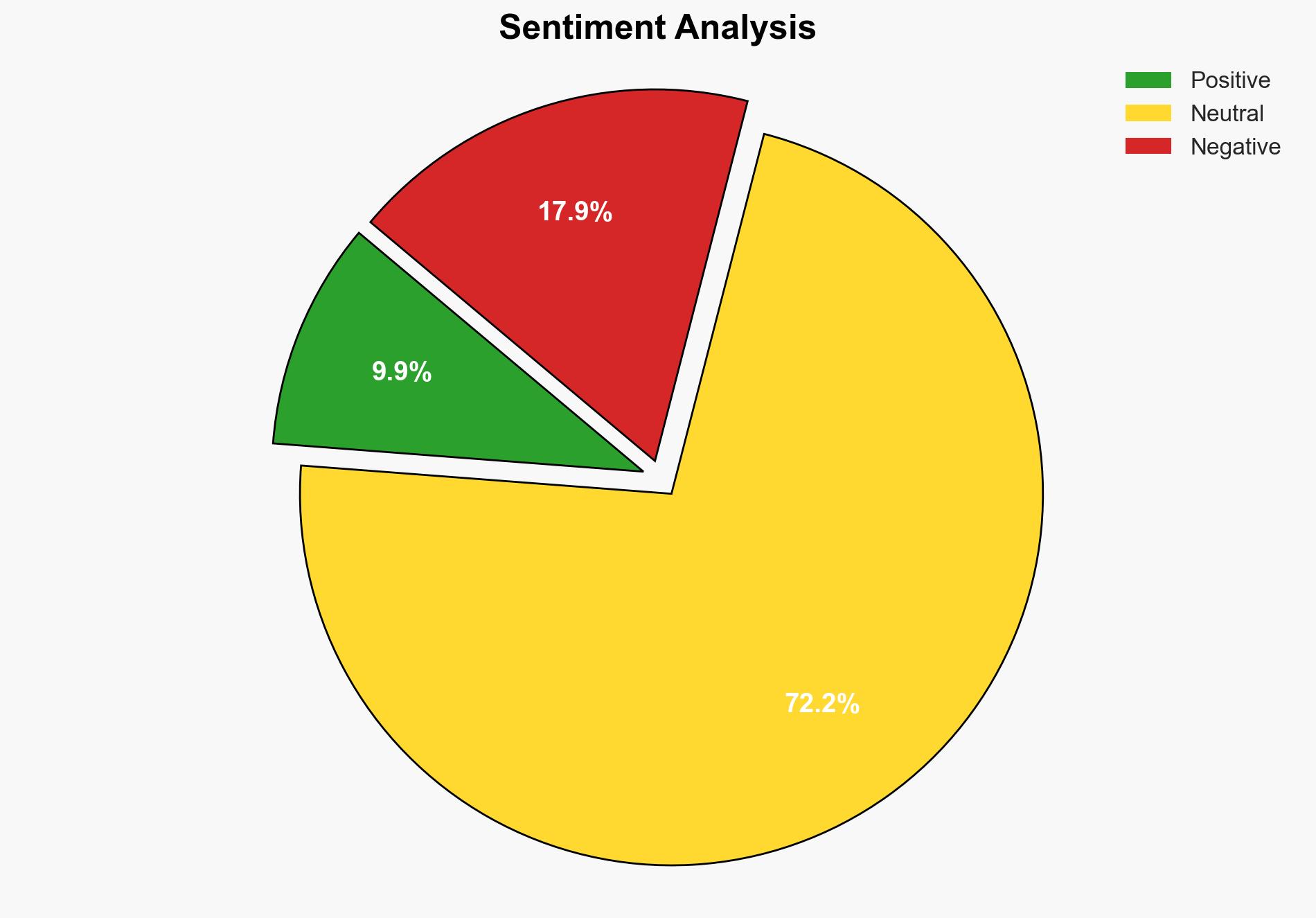Criminals are using a virtual hard disk image file to host and distribute dangerous malware – TechRadar
Published on: 2025-03-20
Intelligence Report: Criminals are using a virtual hard disk image file to host and distribute dangerous malware – TechRadar
1. BLUF (Bottom Line Up Front)
Recent intelligence indicates a novel phishing campaign utilizing virtual hard disk (VHD) image files to distribute the VenomRAT malware. This method effectively bypasses traditional security measures, posing a significant threat to data security and system integrity. Immediate action is recommended to enhance detection and prevention strategies across affected sectors.
2. Detailed Analysis
The following structured analytic techniques have been applied for this analysis:
General Analysis
The campaign leverages VHD files attached to phishing emails, which, when opened, mount a virtual drive and execute a batch script. This script includes obfuscation techniques and AES encryption to deploy VenomRAT. The malware enables remote control of infected systems, allowing attackers to execute commands, steal sensitive data, and deploy additional malicious software. The use of VHD files is a strategic choice to evade email security and endpoint protection solutions.
3. Implications and Strategic Risks
The deployment of VenomRAT via VHD files presents significant risks, including:
- Compromise of sensitive data and intellectual property.
- Potential for widespread disruption in critical infrastructure sectors.
- Increased financial losses due to data breaches and system downtime.
- Escalation of cyber threats targeting large organizations and government entities.
The adaptability of threat actors in circumventing security measures underscores the need for continuous innovation in cybersecurity defenses.
4. Recommendations and Outlook
Recommendations:
- Enhance email filtering systems to detect and block VHD file attachments.
- Implement advanced endpoint protection solutions capable of identifying and mitigating obfuscated scripts and encrypted payloads.
- Conduct regular cybersecurity training and awareness programs for employees to recognize phishing attempts.
- Encourage collaboration between cybersecurity firms and government agencies to share intelligence and develop robust countermeasures.
Outlook:
Best-case scenario: Rapid adaptation of security measures leads to effective mitigation of the threat, minimizing impact on organizations.
Worst-case scenario: Failure to address the threat results in widespread data breaches and significant economic damage.
Most likely outcome: Continued evolution of phishing tactics necessitates ongoing vigilance and adaptation of security strategies.
5. Key Individuals and Entities
The report highlights the involvement of Prashant Kumar and Sead, who have been instrumental in analyzing and reporting on the phishing campaign. The organization Forcepoint has provided critical insights into the tactics employed by the threat actors.




